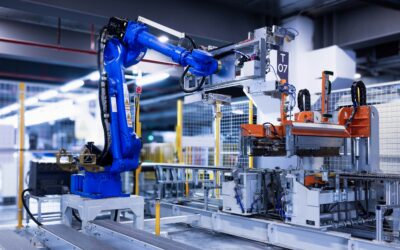In the rapidly evolving landscape of business technology, the traditional approach of relying on multiple software stacks can often lead to inefficiencies and complexities that hinder growth. The stackless approach to business automation, as exemplified by SMS-iT, offers a revolutionary alternative. This model eliminates the need for fragmented applications and cumbersome integrations, allowing businesses to operate within a unified ecosystem.
By leveraging a single platform that integrates CRM, ERP, and over 60 microservices, organizations can streamline their operations and focus on what truly matters: driving results. The stackless approach is not merely about reducing the number of tools in use; it’s about rethinking how businesses can operate more intelligently. With SMS-iT, companies can automate processes that were once time-consuming and labor-intensive.
This shift not only simplifies workflows but also empowers teams to make data-driven decisions with real-time insights. By adopting a stackless model, businesses can break free from the limitations of outdated systems and embrace a future where agility and adaptability are at the forefront.
Key Takeaways
- Stackless approach to business automation focuses on streamlining processes and eliminating unnecessary layers in order to improve efficiency and productivity.
- Implementing stackless automation in your business can lead to cost savings, faster decision-making, and improved customer satisfaction.
- Stackless automation can improve efficiency and productivity by reducing manual tasks, minimizing errors, and enabling better resource allocation.
- Common challenges in adopting a stackless automation strategy include resistance to change, lack of expertise, and integration issues with existing systems.
- Artificial intelligence and machine learning play a crucial role in stackless automation by enabling predictive analytics, intelligent decision-making, and autonomous processes.
The Benefits of Implementing Stackless Automation in Your Business
Implementing stackless automation through platforms like SMS-iT brings a multitude of benefits that can transform the way businesses operate. One of the most significant advantages is cost reduction. By consolidating various functions into a single platform, organizations can eliminate the expenses associated with maintaining multiple software licenses, training staff on different systems, and managing complex integrations.
This streamlined approach not only saves money but also reduces the burden on IT resources, allowing them to focus on strategic initiatives rather than troubleshooting disparate systems. Moreover, stackless automation enhances collaboration across departments. When all teams operate within a unified platform, information flows seamlessly between them, fostering a culture of transparency and cooperation.
This interconnectedness leads to improved communication and faster decision-making processes. With SMS-iT, businesses can ensure that everyone is on the same page, working towards common goals without the silos that often plague traditional setups. The result is a more cohesive organization that can respond swiftly to market changes and customer needs.
How Stackless Automation Can Improve Efficiency and Productivity
Efficiency and productivity are critical components of any successful business strategy, and stackless automation plays a pivotal role in enhancing both. By automating repetitive tasks and streamlining workflows, SMS-iT allows employees to focus on higher-value activities that drive growth. For instance, sales teams can spend less time on administrative tasks and more time engaging with prospects and closing deals.
This shift not only boosts morale but also leads to increased revenue generation. Additionally, stackless automation enables businesses to scale operations without the corresponding increase in overhead costs. As organizations grow, they often face challenges in maintaining efficiency due to the complexity of managing multiple systems.
However, with SMS-iT’s integrated platform, scaling becomes a seamless process. Businesses can easily add new functionalities or services as needed, ensuring that they remain agile in a competitive landscape. This adaptability is crucial for long-term success, as it allows companies to pivot quickly in response to changing market dynamics.
Overcoming Common Challenges in Adopting a Stackless Automation Strategy
While the benefits of stackless automation are clear, many businesses encounter challenges when transitioning from traditional systems. One common hurdle is resistance to change among employees who may be accustomed to their existing workflows. To overcome this challenge, it’s essential for leadership to communicate the advantages of adopting a stackless approach clearly.
Providing training and support during the transition can also help alleviate concerns and foster a positive attitude towards new technologies. Another challenge lies in data migration and integration. Businesses often have vast amounts of data stored across various platforms, making it daunting to consolidate everything into a single system.
However, SMS-iT simplifies this process with its user-friendly interface and robust data management capabilities. By offering tools that facilitate smooth data migration and integration, SMS-iT empowers businesses to make the switch without losing valuable information or disrupting operations.
The Role of Artificial Intelligence and Machine Learning in Stackless Automation
Artificial intelligence (AI) and machine learning (ML) are at the heart of stackless automation, driving innovation and efficiency in ways previously unimaginable. With SMS-iT’s Agentic AI capabilities, businesses can harness the power of intelligent automation to optimize their operations continuously. AI algorithms analyze vast amounts of data to identify patterns and trends, enabling organizations to make informed decisions based on real-time insights.
Moreover, machine learning enhances the adaptability of stackless automation systems. As these systems learn from user interactions and data inputs, they become increasingly proficient at predicting outcomes and suggesting improvements. This dynamic capability allows businesses to stay ahead of the curve by anticipating customer needs and market shifts.
By integrating AI and ML into their operations through SMS-iT, organizations can unlock new levels of efficiency and innovation that were once reserved for large enterprises.
Case Studies: Successful Implementation of Stackless Automation in Various Industries
The transformative power of stackless automation is evident across various industries, with numerous case studies showcasing its effectiveness. For instance, a mid-sized manufacturing company implemented SMS-iT to streamline its supply chain management processes. By consolidating its CRM and ERP functions into one platform, the company reduced order processing times by 40% while improving inventory accuracy.
This not only enhanced customer satisfaction but also led to significant cost savings. In the healthcare sector, a clinic adopted SMS-iT to manage patient records and appointment scheduling more efficiently. The stackless approach allowed for seamless communication between departments, resulting in reduced wait times for patients and improved overall care quality.
By automating administrative tasks, healthcare professionals could dedicate more time to patient interactions, ultimately leading to better health outcomes.
The Future of Stackless Automation: Trends and Innovations to Watch
As technology continues to evolve, so too does the landscape of stackless automation. One trend to watch is the increasing integration of advanced analytics into automation platforms like SMS-iT. Businesses are recognizing the value of data-driven decision-making, and as analytics capabilities improve, organizations will be better equipped to leverage insights for strategic planning.
Another innovation on the horizon is the rise of no-code or low-code development environments within stackless automation platforms. These tools empower non-technical users to create custom workflows and automations without needing extensive programming knowledge. This democratization of technology will enable businesses of all sizes to tailor their automation strategies to meet specific needs quickly.
Steps to Take in Transitioning to a Stackless Automation Model
Transitioning to a stackless automation model requires careful planning and execution. The first step is conducting a thorough assessment of existing processes and identifying areas where automation can deliver the most significant impact. Engaging stakeholders from various departments ensures that all perspectives are considered during this evaluation.
Once potential areas for automation are identified, businesses should develop a clear implementation strategy that outlines timelines, resources needed, and key performance indicators (KPIs) for measuring success. Training employees on how to use SMS-iT effectively is crucial for ensuring a smooth transition; providing ongoing support will help reinforce confidence in the new system. In conclusion, adopting a stackless approach to business automation through SMS-iT offers an array of benefits that can propel organizations toward greater efficiency and success.
By embracing this innovative model powered by AI and machine learning, businesses can streamline operations, reduce costs, and enhance collaboration across teams. As you consider making this transformative shift, we invite you to explore SMS-iT’s capabilities with a 7-day free trial at https://www.smsit.ai — your gateway to smarter, faster, and simpler business automation awaits!
FAQs
What is “Stackless” in the context of smart business automation?
“Stackless” refers to a business automation approach that eliminates the need for multiple layers of technology stacks, allowing for a more streamlined and efficient automation process.
How does “Stackless” automation differ from traditional automation methods?
Traditional automation methods often involve complex technology stacks, which can lead to inefficiencies and increased maintenance costs. “Stackless” automation, on the other hand, simplifies the automation process by removing unnecessary layers of technology, resulting in a more agile and cost-effective solution.
What are the benefits of implementing “Stackless” automation in a business?
Some benefits of implementing “Stackless” automation include increased agility, reduced maintenance costs, improved scalability, and enhanced efficiency. By simplifying the automation process, businesses can adapt more quickly to changing requirements and reduce the overall complexity of their automation systems.
How can businesses transition to a “Stackless” automation approach?
Transitioning to a “Stackless” automation approach involves reevaluating existing technology stacks, identifying areas of redundancy or inefficiency, and streamlining the automation process. This may require rearchitecting existing systems, adopting new automation tools, and retraining staff to work within the new automation framework.
What industries can benefit from adopting a “Stackless” automation approach?
Businesses across various industries, including manufacturing, finance, healthcare, and retail, can benefit from adopting a “Stackless” automation approach. By simplifying their automation processes, businesses can improve their operational efficiency, reduce costs, and better adapt to changing market conditions.







